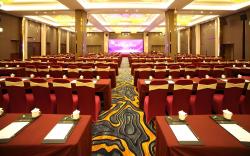Dongju Island Lighthouse (Dongqian Lighthouse) Introduction
The pristine white lighthouse on Dongju Island, known as the Dongju Island Lighthouse, has witnessed a century of history under the blue sky and clear ocean. Located in the northeast of Dongju Island, it was built due to the Qing Dynasty's defeat in the Opium War and the signing of the Treaty of Nanking with Britain, which opened coastal trade. To facilitate the identification of the direction to Fuzhou, a lighthouse was constructed during the Tongzhi period at the request of the British. Built in the 11th year of Tongzhi (1872), the Dongju Island Lighthouse was born under this historical context. In 1988, it was recognized as a second-class historic site in the Taiwan-Fujian region by the Ministry of the Interior. It is the first lighthouse in Taiwan constructed of granite, painted in pure white, with a height of approximately 19.5 meters. The light source, refracted through a lens of a shell-type crystal, allows a visual range of up to 16.7 nautical miles (approximately 31 kilometers). The Dongju Island Lighthouse has been serving quietly for over a century, flashing a unique signal of one long and two short bursts every night. Notably, there is a 30-meter long white windbreak wall on the grass connecting the lighthouse and the office. This was built because the lighthouse is located on a high point where winds are strong, allowing workers to quickly pass through while bent down during strong winds, preventing their oil lamps from being extinguished. The White Hair Castle – Lighthouse Relics Exhibition Hall, which opened in June 2008, features a long white windbreak wall. Local residents refer to this area as "White Hair Castle," showcasing rich collections of lighthouse relics, which enhance the tourism experience at the lighthouse and is an essential highlight not to be missed. The Dongju Artillery Station, one of the hotspots for observing blue tears, is connected to the Dongju Island Lighthouse. It was once a military stronghold, featuring bunkers and artillery along the coastline for several hundred meters. Now it has become a military tourist site in Matsu, open for visitors to explore. Walking along the pathway enclosed by wooden railings to the small platform at the end provides one of the best private viewing spots for blue tears at night! Note: The rocky terrain of Dongju Island can be dangerous at night due to insufficient lighting, so do not go alone and it is recommended to visit with a guide to view the blue tears.






















